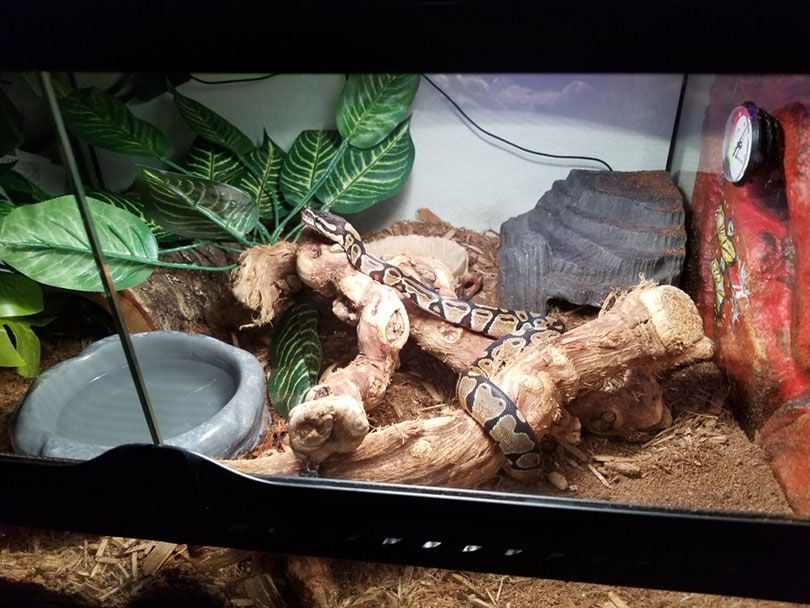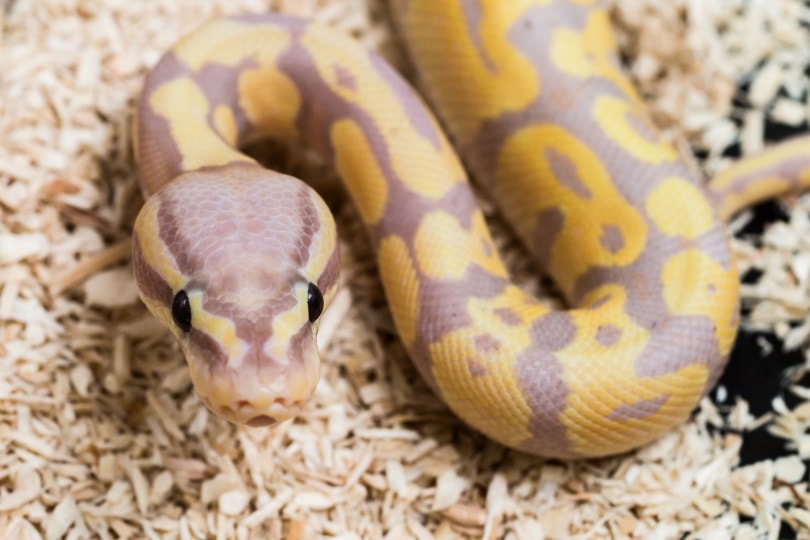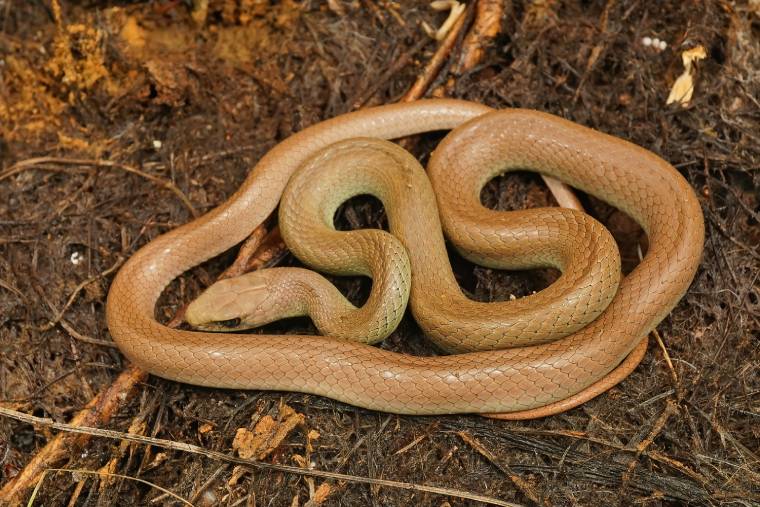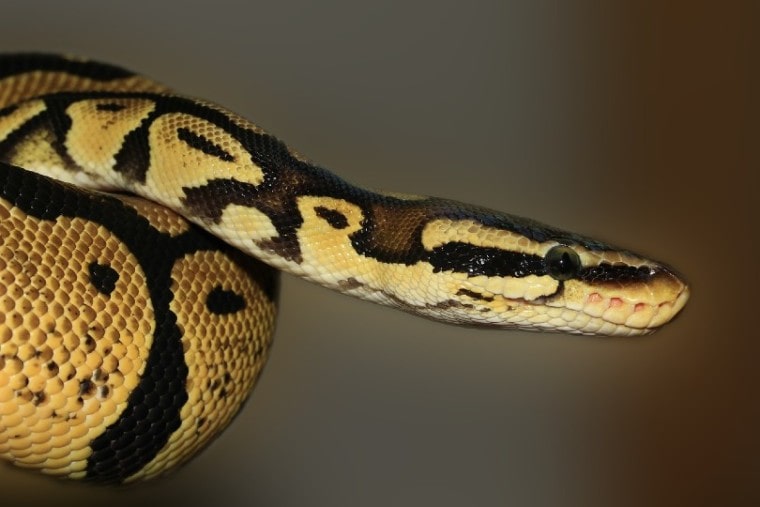
Most animals are social creatures that get along better if they have company, especially with the same species. That’s why it’s common to adopt two pets of the same species so that they can bond and socialize with one another.
However, does that concept hold true when it comes to ball pythons? The answer is tricky. Ball pythons can share the same tank, but should they? The answer to that question is no. In this article, we’ll go over a few things you should know about ball pythons, explain why they shouldn’t live together in the same tank, and provide a few tips on how you can put them in the same tank if you absolutely have to.
Ball Pythons Living Together in the Wild
It’s important to note that ball pythons are solitary creatures that prefer to be alone. While ball pythons who live in the wild do come together to breed, it’s very rare that you’ll see a group or a pair of ball pythons together.
If they have to share a burrow, it’s only because it’s absolutely necessary. Remember, just because your ball python was raised in captivity, it doesn’t change the fact that they like to be alone.
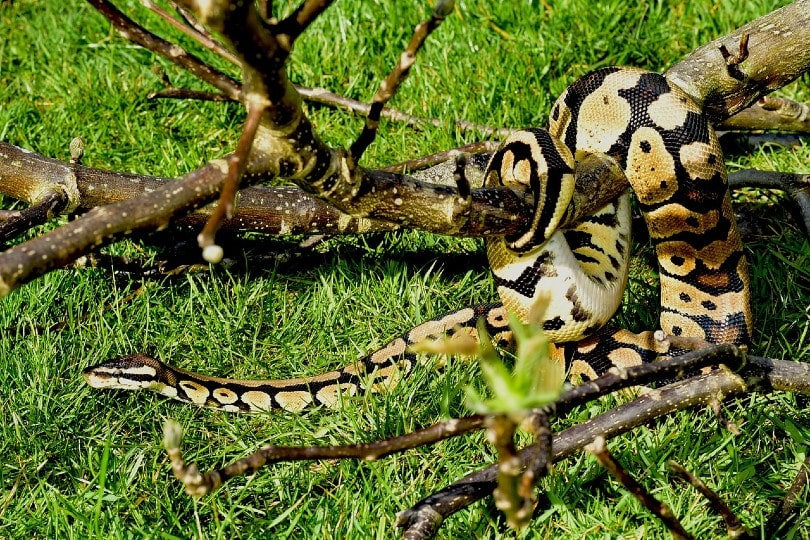
Dangers of Housing Two Ball Pythons in One Tank
You’ll be hard-pressed to find any snake expert who recommends putting two or more ball pythons in the same cage because there are dangers to doing so. In the next section, we’ll discuss a few of the dangers that you could be presented with by putting your two ball pythons in the same tank.
1. One Snake Establishing Dominance Over the Other
Since your ball python is not a social creature, it’s highly doubtful that he’s going to get along with another snake in his tank. The more dominant snake will quickly exert control and the other snake will become submissive.
This isn’t a good thing as the less strong of the two snakes will suffer because of this dominance. For example, if you see your ball pythons lying on the basking rock in the basking area together, you might think that they’re getting along and enjoying the heat.
What’s really happening is that the dominant ball python is lying on top of the submissive snake, looking to claim his resources and territory. This dominance can lead to the submissive ball python not getting the heat he needs to remain healthy and can lead to additional health problems.
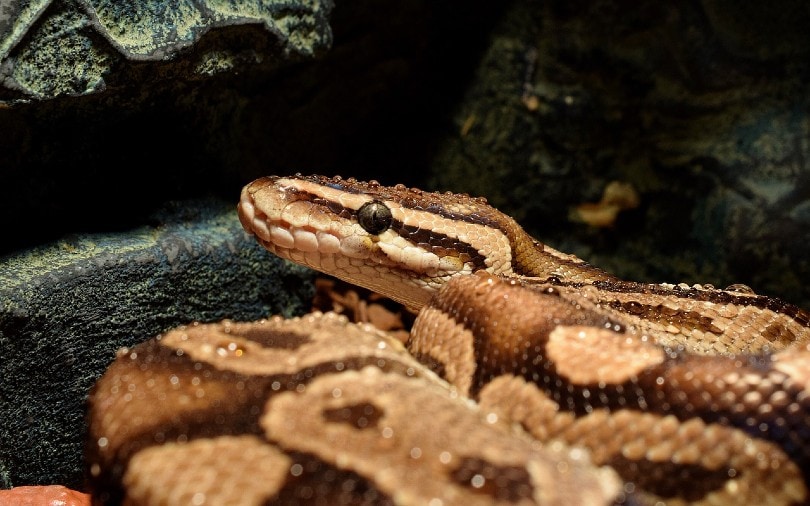
2. Issues With Feeding
The dominant ball python is likely to steal the food of the more submissive ball python as well. Lack of food will cause your more submissive snake to become sick because he’s not getting the nutrients he needs to thrive.
You could, of course, feed them in separate tanks, but that comes with its own set of problems as well. Not only do you have the stress of caring for and cleaning two tanks, but you’ll also have to move the snake back to the original tank after feeding, which could cause regurgitation and health problems.
Ball pythons have also been known to starve themselves and die because they were forced to share a tank. This is certainly not what you want for your reptile pets.
3. Issues With Stress
Having another animal in their cage can cause a ball python to constantly deal with low-level stress. This can affect not only the snake’s basic bodily functions but their immune system as well.
4. Spreading Diseases
If you have two or more ball pythons in a cage, any type of disease one snake gets can quickly spread to the other snake in the tank. Of course, you already know that the best way to ensure your snake is healthy is by checking his stool periodically. That’s not possible if you have more than one ball python per cage because you won’t know which stool belongs to which snake.
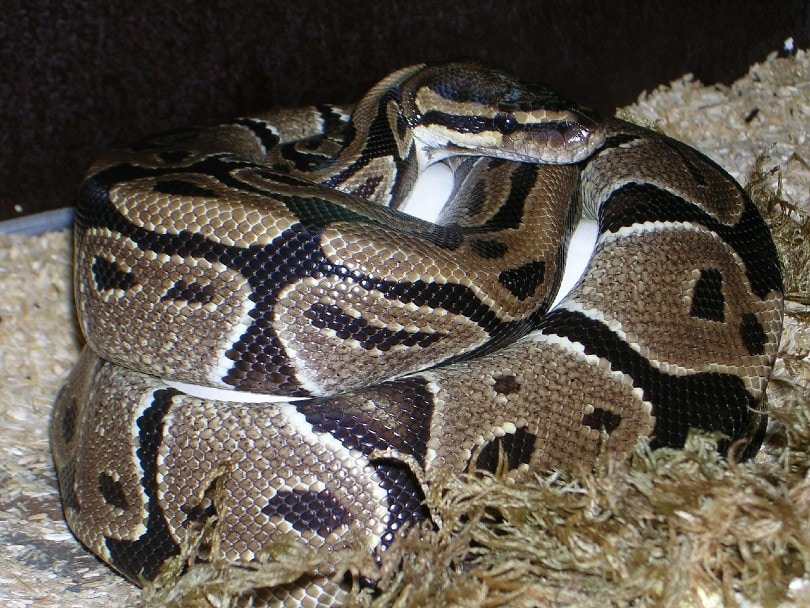
5. Cannibalism
Although ball pythons cannibalizing one another is extremely rare, it’s happened enough times that it needs to be mentioned. This usually happens if one of the ball pythons is larger than the other. It especially happens if a ball python is left in a cage with hatchlings. If you do put your ball pythons in the same tank, make sure they’re the same size.
Is There a Safe Way to House Two Ball Pythons in the Same Tank?
While experts agree that ball pythons should be kept in separate cages to live, there are pet owners who have put them in the same cage and had good results. While it is not recommended, here are a few tips for housing your ball pythons safely in the same tank.
First, you’ll need a tank with a lot of space, such as 24 square feet for each ball python. You’ll want to have multiple basking areas so that the snakes won’t feel territorial over one, pepper the tank with a lot of branches for the snakes to climb on, and a ton of greenery to cover any and all empty spaces.
It’s important to note that keeping up this type of environment for your two ball pythons will cost you extra time, cleaning, and extra money as well. If you can accomplish all the above, then your two ball pythons might be able to live in the same tank in peace, but it’s not a guarantee.
- You may also be interested in: Firefly Ball Python Morph
Can Two Ball Pythons Live in the Same Tank?
While it is possible for two ball pythons to share the same tank, it’s not recommended. There’s just too much that can go wrong, and ball pythons are extremely antisocial. Putting the two snakes in the same cage can lead to diseases, stress, feeding issues, and even cannibalism.
It’s best to give each of your ball pythons the space they need to grow and thrive in a tank that is their very own for the best results. After all, you keep ball pythons as pets because you like them, and you’d never want to do anything that would hurt your pets, now would you?
- Next on your reading list: Monsoon Ball Python Morph
Featured Image Credit: sipa, Pixabay


